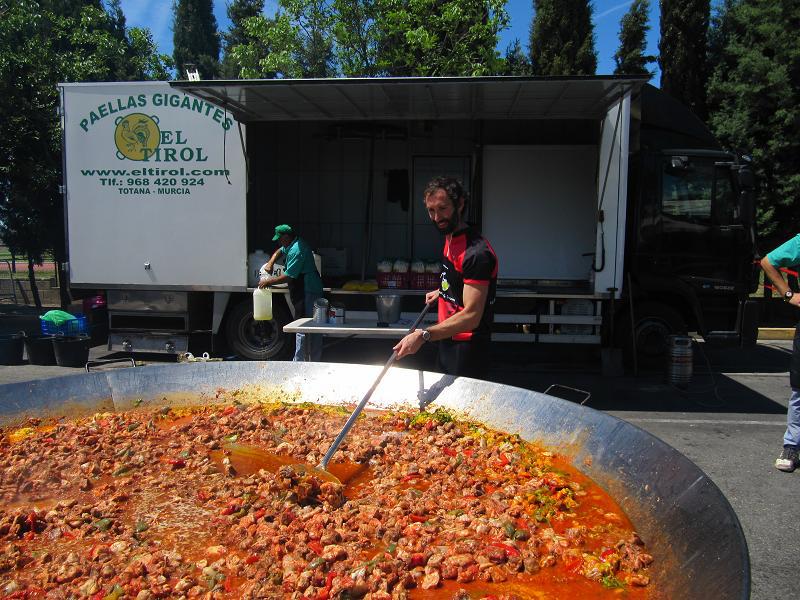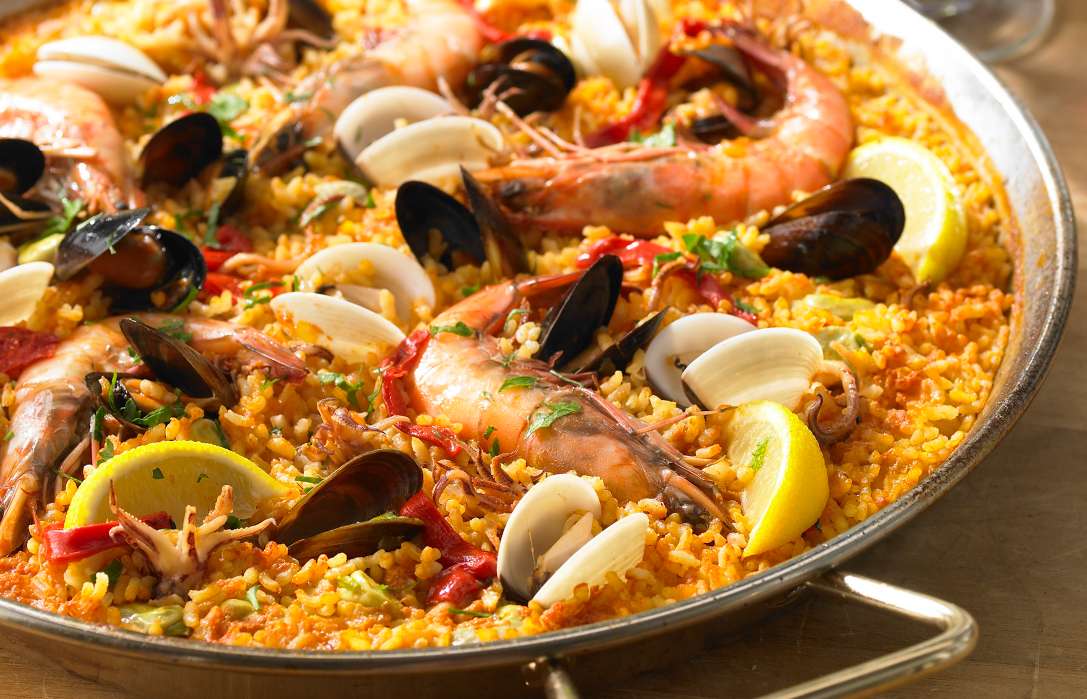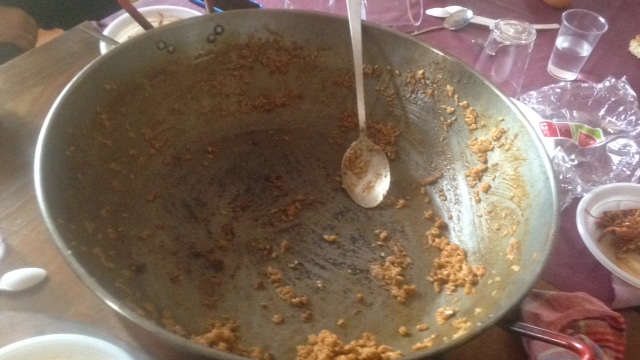Before getting your apron stained with saffron threads and prawn heads how about we kick things off with a Spanish grammar class. Why is that I hear you all say? Well the next time you say paella we want to make sure you sound as though you really know the dish! That way you will be able to impress your guests when you serve up our authentic Sierra paella recipe. So here we go with our first class in Spanish pronunciation 101! The ll in Spanish is pronounced in English like the letter y in yet. So paella when spoken by a native sounds like pah/EH/yah. Practise that a few hundred times while preparing the stock and you should have it sorted by the time you need to serve your paella!
Having the Sierra Sports & Tours base in food-mad Spain has meant we have had the pleasure of sampling literally hundreds of excellent paellas over the last 10 years. Paellas made by my wife, her mother, her grandmother, aunties, friends who are chefs at top-end restaurants and even cycling clubs after what has been a long day on the bike!
The thing which always amazes me though is a Spaniard, with no background in cooking whatsoever, will still know what it takes to throw a paella together in front of a crowd of masses without the slightest concern. A bit of stock, sofrito (onion, garlic, capsicum, tomato & olive oil), rice, saffron, add the meat plus seafood and Bob’s your Uncle! And the end result? It always comes out amazing. Some paellas might have more ingredients than others, others are served with a little more moisture (meloso) or some with the nice crispy layer on the bottom (socorrat). But at the end of the day it is a paella and enjoyed amongst friends and family which is the most important thing.
Now to get a few things clear! When some of our Spanish cycling tour guests arrive they have the impression that they will be feasting on paella every night. But that is far from the truth. Paella is a typical dish for that Sunday afternoon when every now and then you catch up with friends or family. It is a well loved dished but it is easy in your day to day life to go a month without enjoying this flavoursome rice dish. Perhaps it is because it takes time to prepare (often the stock is prepared days in advance to get the best effect) or perhaps because you need time to stand around the paellera (paella dish) and catch up on gossip while the rice absorbs all that goodness! When I asked my wife why the Spanish don’t eat paella more often her instant response was ‘Do you eat kangaroo every night?’ Fair point I thought. I don’t like stereotypes either and on I went looking for more Spanish paella cooking secrets.
Some final tips before you get stuck into the cooking!
Rice – short grain rice varieties work best for paella. Look for the Bomba, Senia, Bahia and Calasparra types in your local market.
Saffron – gives the rice its distinctive yellow color. Saffron threads are best but they need moisture to release the flavour. The best way to extract flavour from saffron is to soak the threads in a tablespoon of hot (not boiling) liquid for about 10 minutes. Then add both the saffron and the liquid to the recipe. As the saffron soaks, you’ll notice the distinctive aroma indicating that your saffron ‘tea’ is ready.

Here I am doing my thing for 1000 hungry cyclists after Gran Fondo Contador (Madrid, Spain)
Paella is usually cooked in a round shallow pan to give the best end product. If you only have deeper pans don’t let this put you off. The paella you prepare will be more in the ‘meloso’ style!
The Sierra paella which we are pleased to now handover is our authentic family Spanish recipe. Put the BBQ aside for your next family get together and experience the satisfaction of preparing a quality paella in true Spanish style. Even I can get this recipe to work which gives everyone hope! And take note – many paella recipes, even those of Jamie Oliver, use Chorizo sausage. Feel free to add whatever protein you like but if you are cooking for a Spaniard please do not add any Chorizo to your paella. This is a big no no! Chorizo is for cooking on the BBQ or in another typical winter breadcrumb based dish called ‘Migas’. But that’s another lesson for a rainy day!
Ingredients (4 people)
1 red capsicum, chopped
1 green capsicum, chopped
3 ripe tomatoes, grated
3 cloves of garlic, chopped
250 grams of chicken thigh, bone removed, chopped
250 grams of pork fillet, chopped
1 squid, skin removed, cut into rings
12 raw prawns
1 cup of rice (short grain)
Saffron mix: (1 garlic clove, chopped; 1 handful of parsley, chopped; saffron: 4 threads and ½ tsp powder; 1 tsp of salt; 1/2 cup of prawn stock)
8 mussels (optional)

Paella Cooking Method
- Remove the prawn heads and shells. Separate the prawn body for cooking later. Place the prawn heads and shells ONLY into a saucepan and cover with 2 ¼ cups of water and bring to the boil for 5 min. Strain the stock to remove the prawn shells (Note: when we use the prawn based stock later it must be hot).
- Heat olive oil in a pan. Add chicken, cook both sides until brown and then remove. Add the pork to the pan and repeat as above for chicken. Leave the chicken and pork on a plate for later use.
- In the same pan add the 3 cloves of garlic and cook for 2 min. Add the red and green capsicums until they are cooked. Then add the squid, tomatoes plus the chicken and pork meat. Mix well.
- Add the rice, hot prawn stock and saffron mix. Mix well. Bring to the boil then simmer on low heat, uncovered for 20min.
- 5 min before the cooking time has elapsed add the prawns on top of your rice mixture. If you like mussels you can add them now (place vertically making sure the shells are partially submerged in the rice).
- Remove the paella from heat and leave it to rest, covered for 5 min.

And now for the finished product – oops – too slow!
